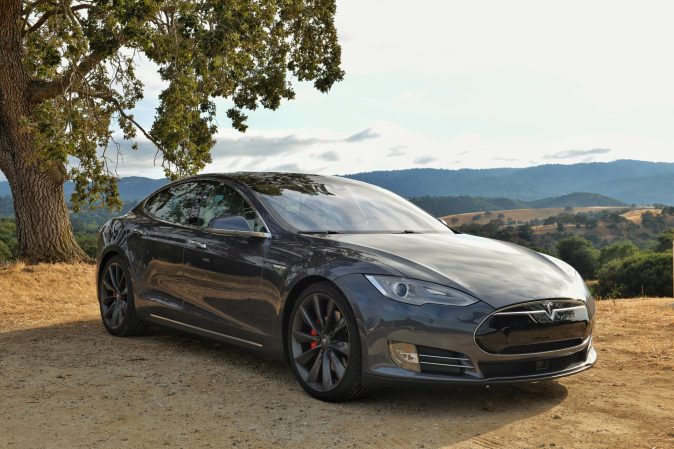

Cars are getting smarter. While you can’t buy a true self-driving car at a dealership, the vehicles that are available are still crammed full of the newest tech—even if some features are gimmicky. There’s just one problem: hardly anybody is actually using it.
Many seasoned drivers remember their first car with cruise control, or air conditioning. Heck, some people who started off in a Ford Model T have even gotten the chance to sit behind the wheel of an all-electric Mustang Mach-E. Technology has changed the way that the world uses the automobile, but some of the features found in modern cars seem to be a tad egregious. According to a new study from J.D. Power, based on a survey of more than 100,000 new-car owners, drivers seem to agree.
More than one in three advanced technologies go unused during the average vehicle’s first 90 days of ownership. The biggest reason? Most people say that they simply don’t need fancy features like an infotainment system that can pay for their coffee, driver-to-passenger communication devices, and gesture controls.
[RELATED: The best car and automotive technologies of 2020]
For example, General Motors’ aptly-named Marketplace app and others like it are infotainment-based tools where drivers can pay for food and fuel, make reservations at a nearby hotel, or check-in to a store for curbside pickup. These seem like things that the majority of people would do from their phones instead of their car, and most new vehicle owners who have a marketplace-equipped vehicle seem to agree. A total of 61 percent of those owners say they have never used their in-car marketplace, and 51 percent of those also say that they have no need for it at all.
Driver-to-passenger communication devices seem to be another gimmick, at least according to owners. These features typically are reserved for larger vehicles and allow the driver and passengers a way to better hear one another without raising their voices—the Honda Odyssey has CabinTalk, the Toyota Sienna calls it Driver Easy Speak, and Cadillac’s premium Escalade SUV refers to this as its “Conversation Enhancement System.” Still, at least 52 percent of owners have never tried this at all in their feature-equipped vehicle, and 40 percent of those say they don’t need it, period.
Then there are the features like BMW’s gesture controls, which some people find intuitive. Instead of reaching forward to tap on the infotainment screen, drivers can use their hands to navigate menus, change the volume, and more. Unfortunately, this tech also gives buyers the most trouble, with 41 problems reported per 100 vehicles. It also leaves owners the least satisfied of any in-car tech, ranking last in J.D. Power’s satisfaction survey for the second year in a row.
[Related: The interior of Rolls-Royce’s new Ghost sedan is hauntingly beautiful]
There are a core set of must-have features for many new car buyers. Two of the most-loved technologies revolve around vision. Owners say that a camera-based rear-view mirror and ground-view camera are both ranked as the most well-executed tech feature in their vehicle. The systems are also highly desirable for owners, with 62 percent of US buyers saying that they would want the ground-view camera to be equipped in their next vehicle.
Interestingly, one-pedal driving—allowing the driver of an electric car to utilize the regenerative braking of the electric motor to avoid taking their foot off the accelerator pedal to brake—also ranked extremely high among EV buyers.
On the topic of electric cars, J.D. Power says that Tesla ranks highest in its Innovation Index. The all-electric automaker has made a name for itself from its new and innovative features, from an advanced Level 2 semi-autonomous driver’s aid to its minimalist screen-focused interior. This ranking is unofficial, however, as Tesla doesn’t qualify for an actual place on the board since it doesn’t allow J.D. Power to survey owners in 15 states.
[RELATED: How Tesla is using a supercomputer to train its self-driving tech]
Officially, Genesis has the highest Innovation Index score of any luxury car maker, and its sister brand, Hyundai, ranks highest in the mass market segment. Mitsubishi ranks last, followed by a tie between Mini and Jeep.
So just what does all of this mean for the average car buyer’s wallet?
“New-vehicle prices are at an all-time high, partly as a result of an increased level of content,” said Kristin Kolodge, J.D. Power’s executive director of human machine interface, in a press release. “This is fine if owners are getting value for their money, but some features seem like a waste to many owners.”
Car prices are indeed rising, and have been for years. In fact, the average price of a brand new car topped $45,000 for the first time in history in September, according to a study by Kelley Blue Book. For comparison, this is up from around $40,000 in December 2020—a 12.5 percent increase in just nine months. Granted, the semiconductor shortage isn’t helping, but neither is all of the unused tech that lies dormant in many new vehicles.























